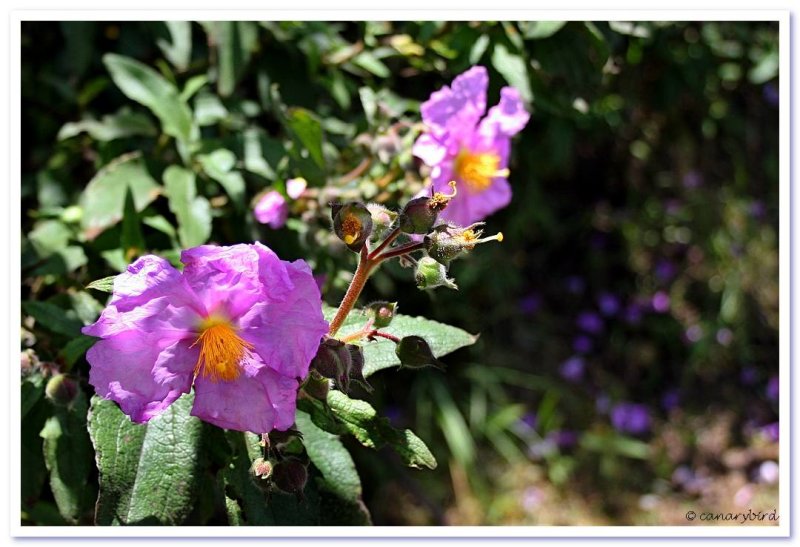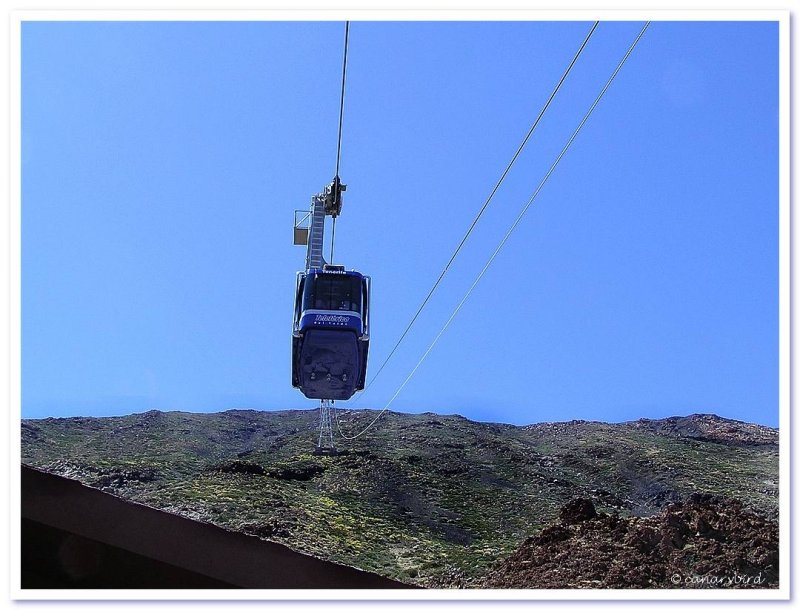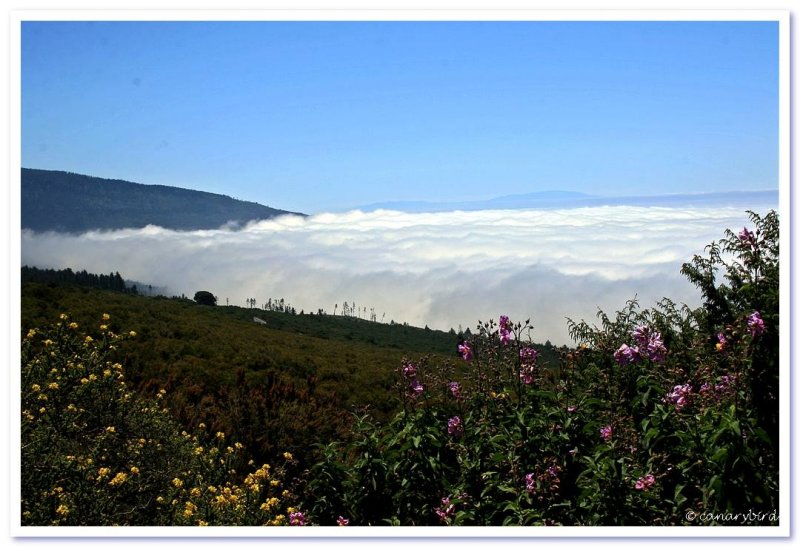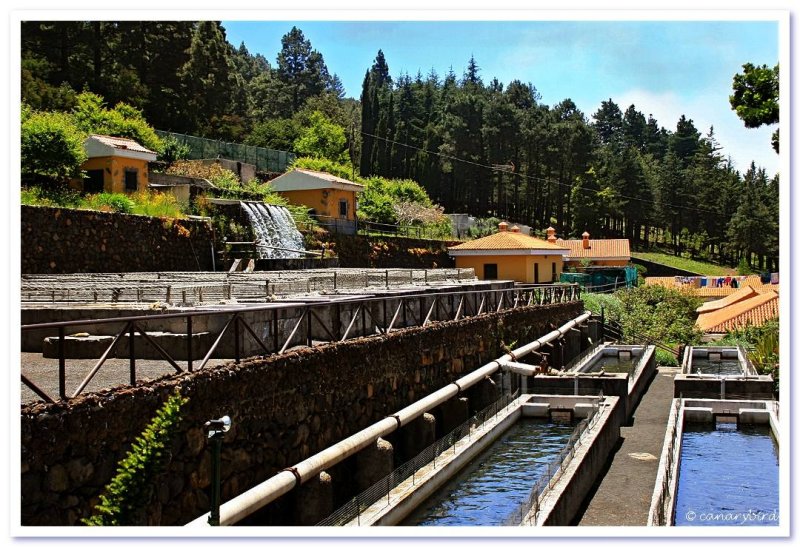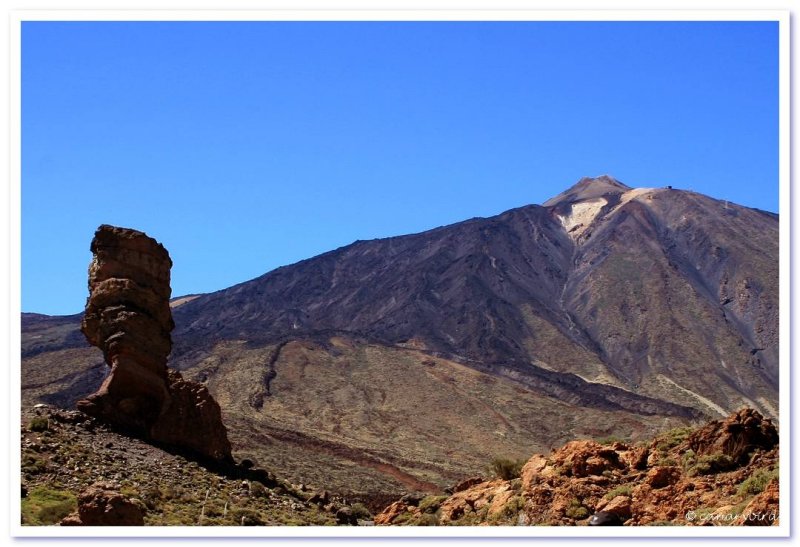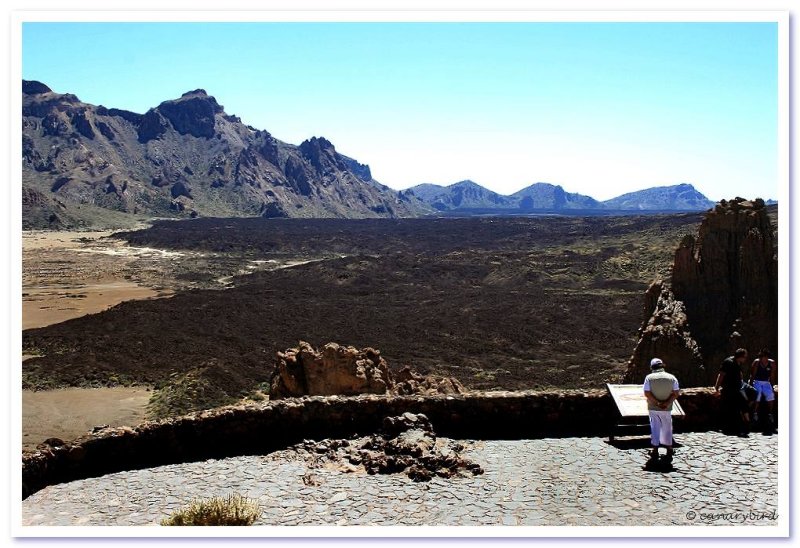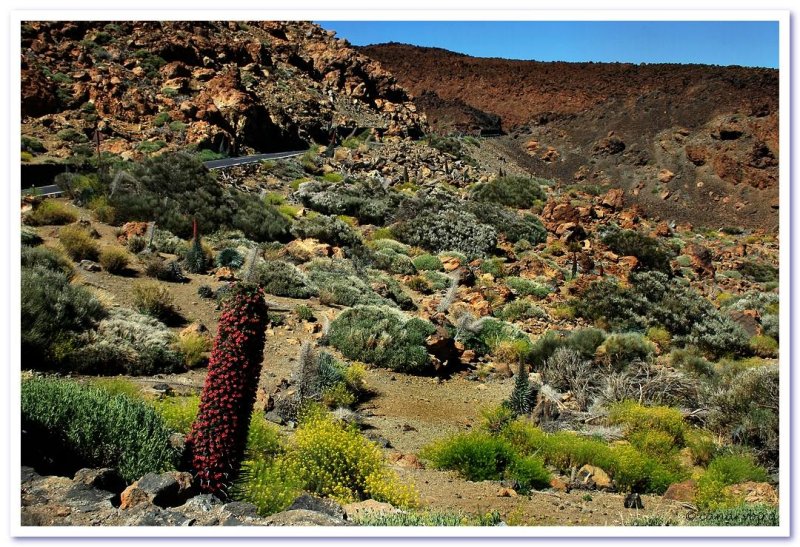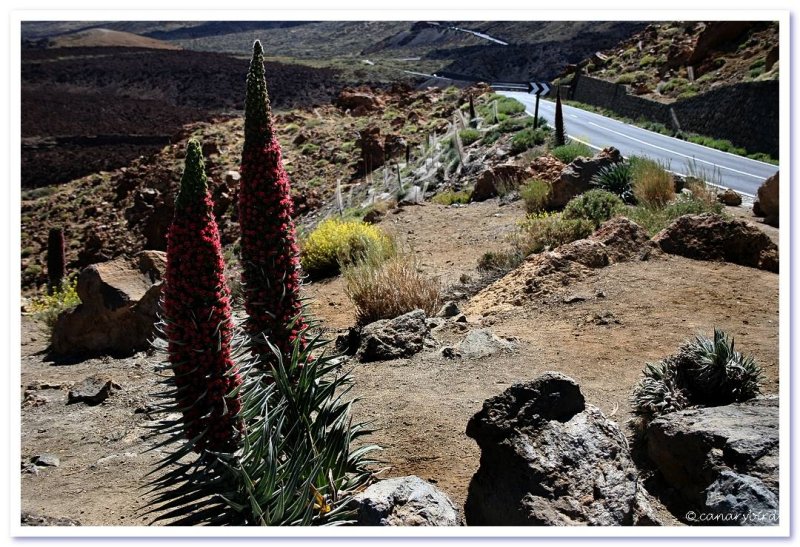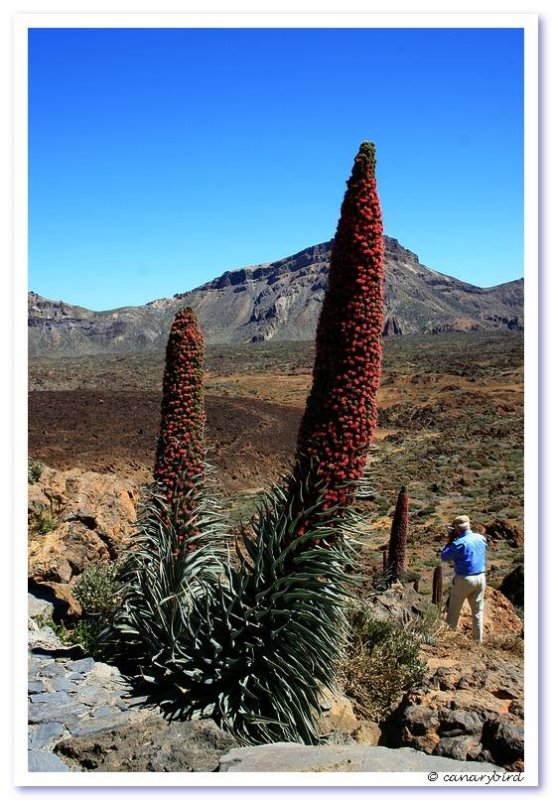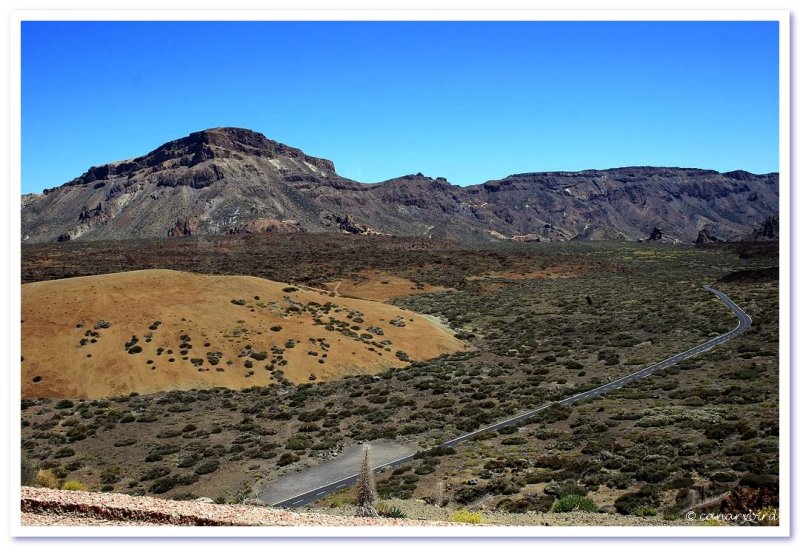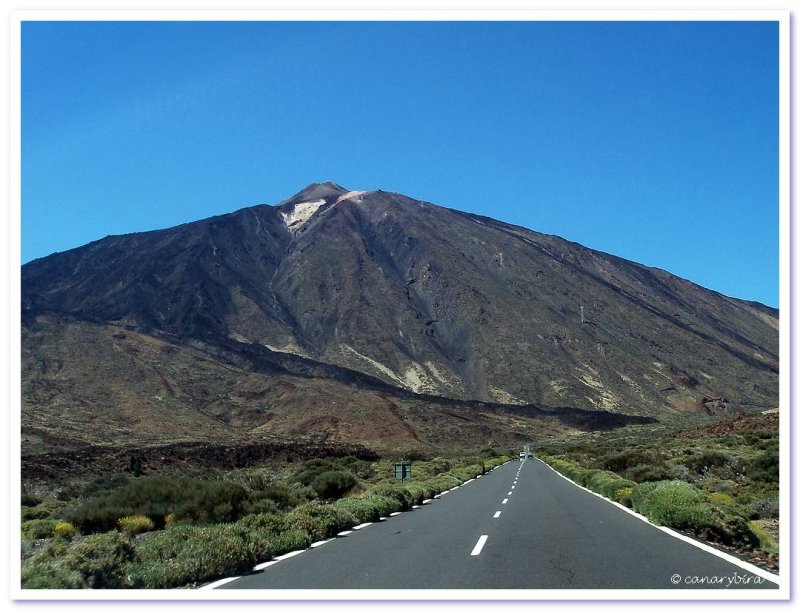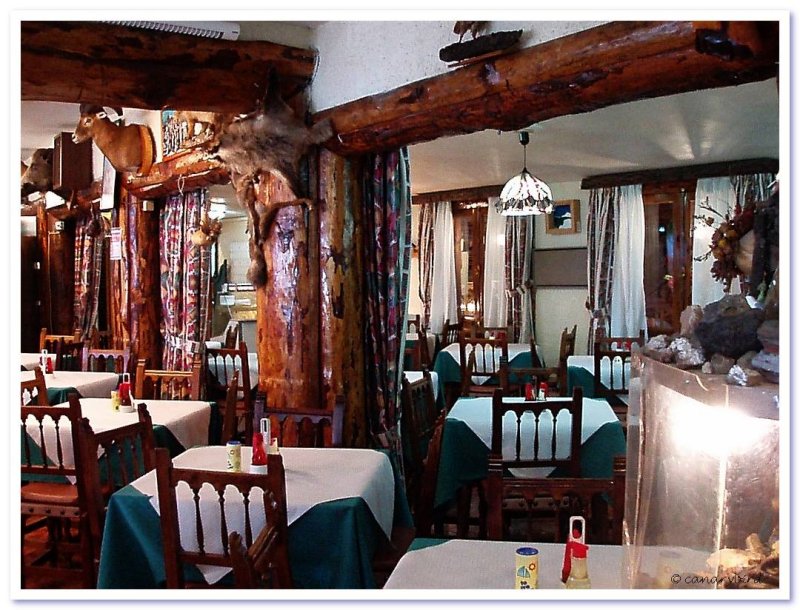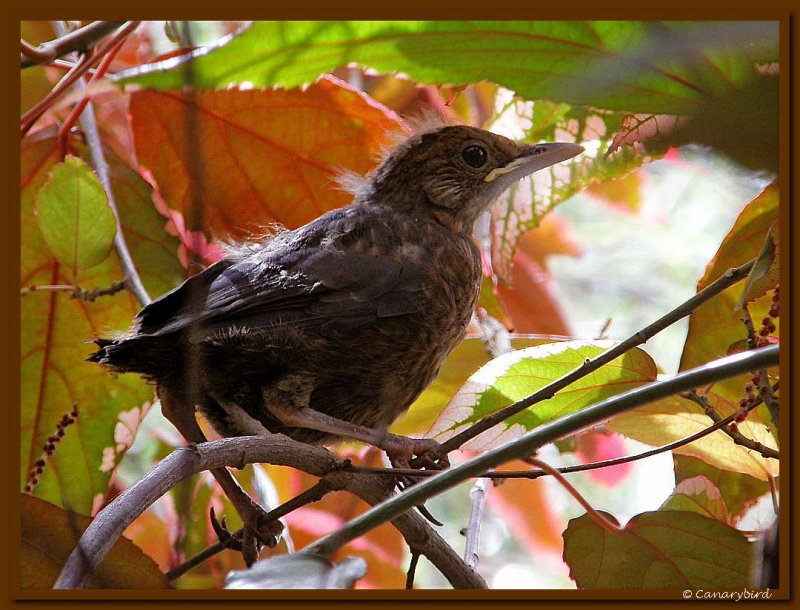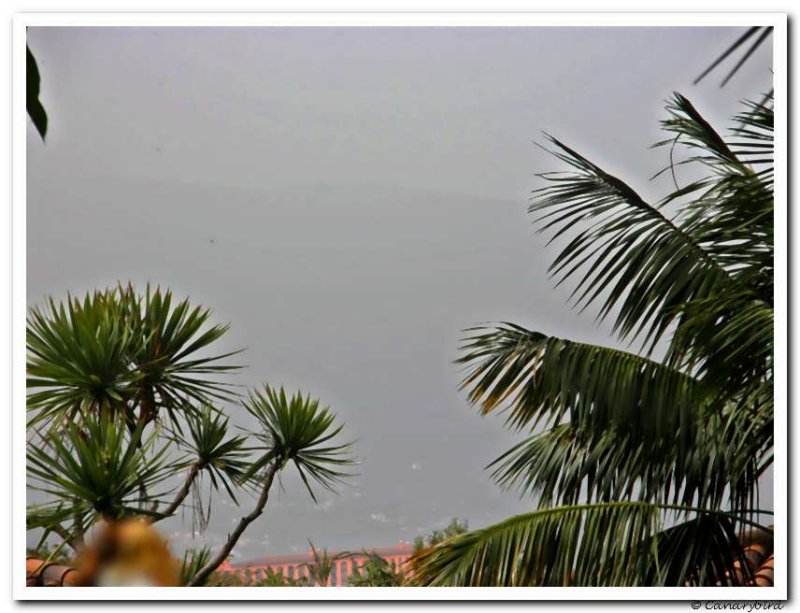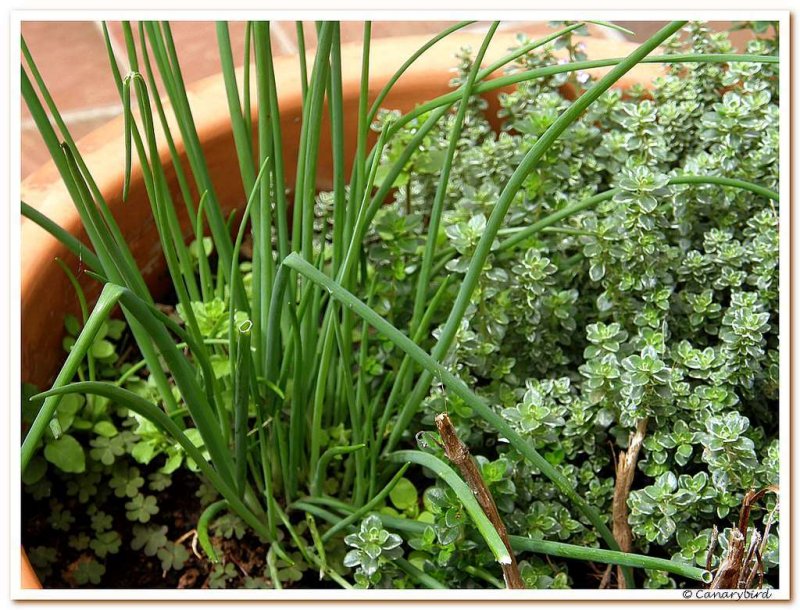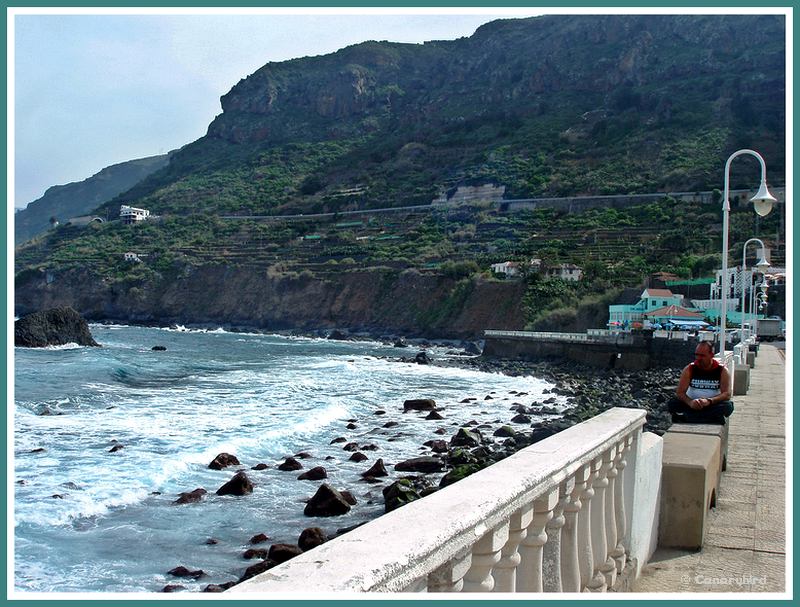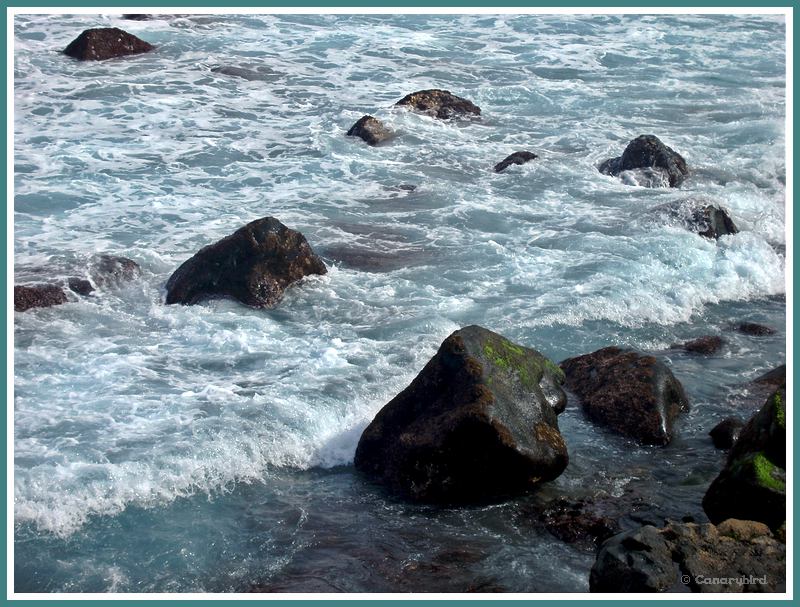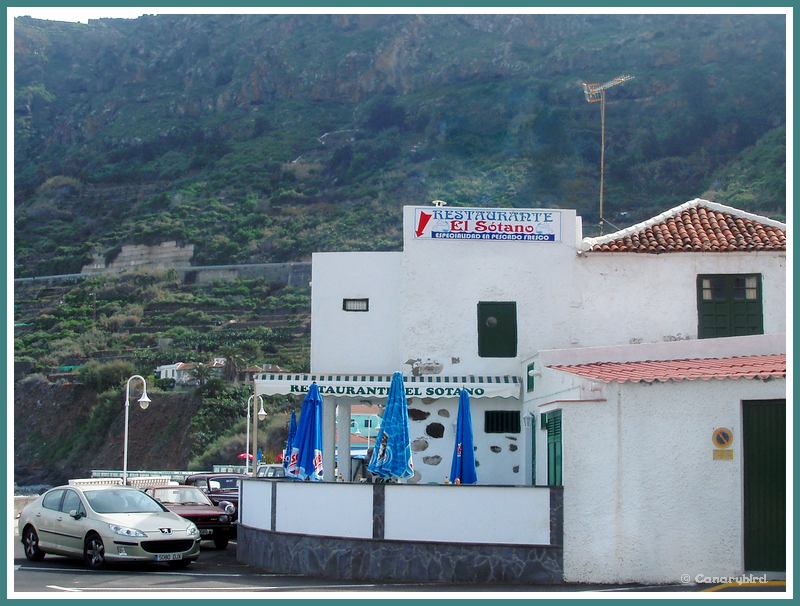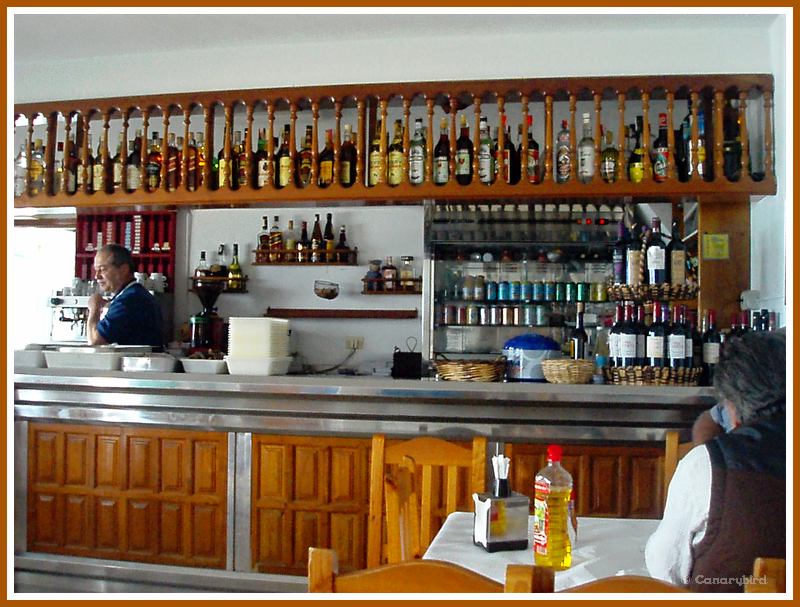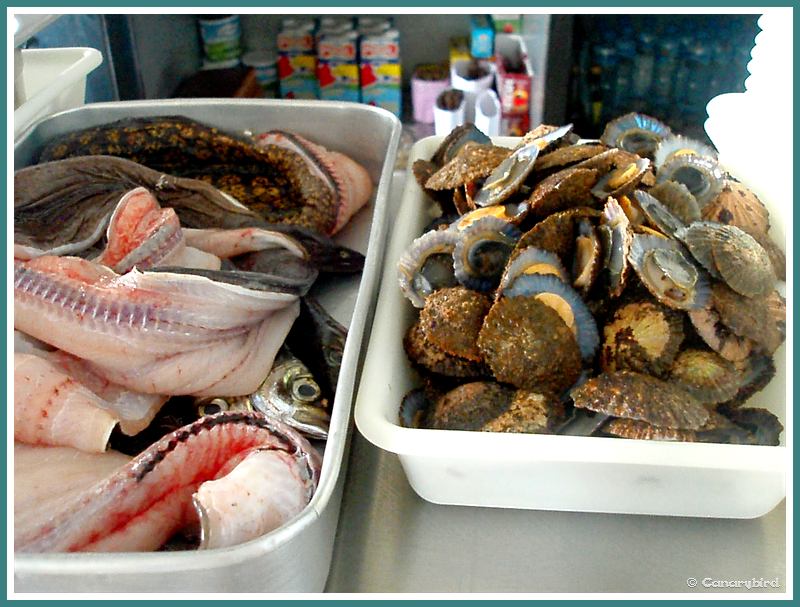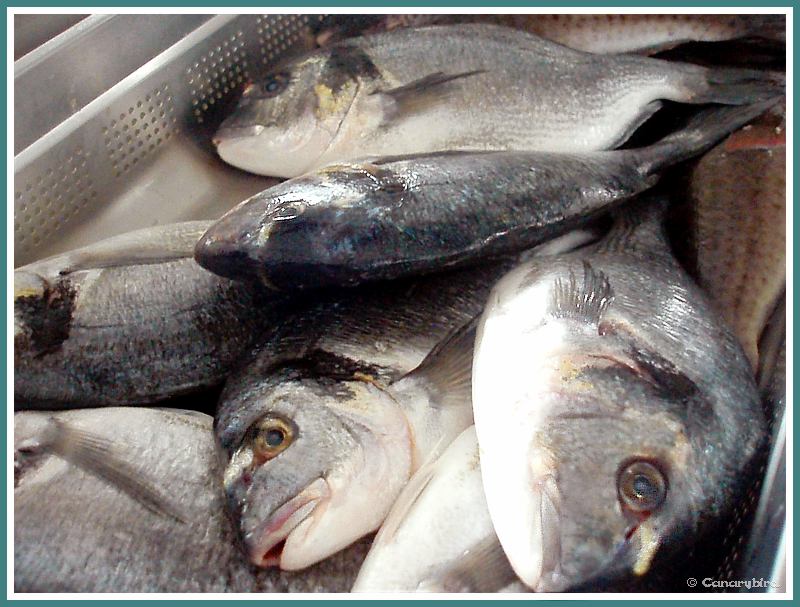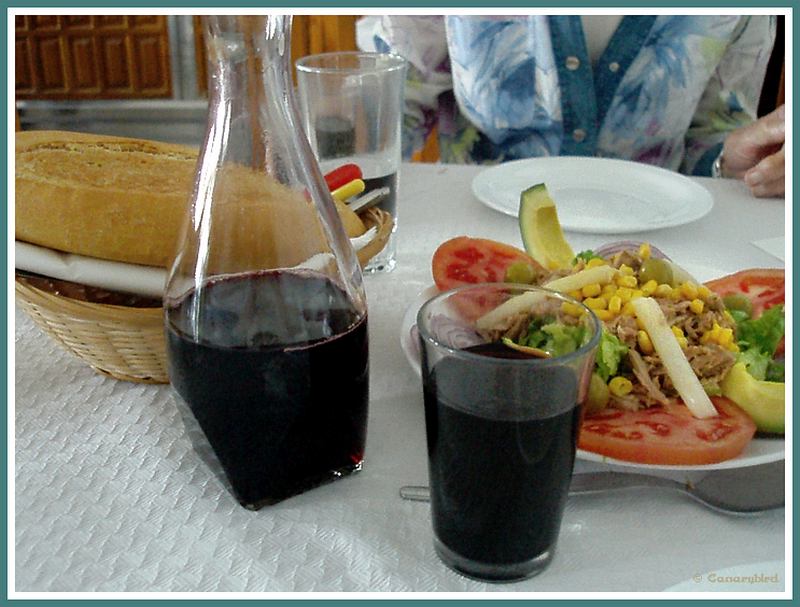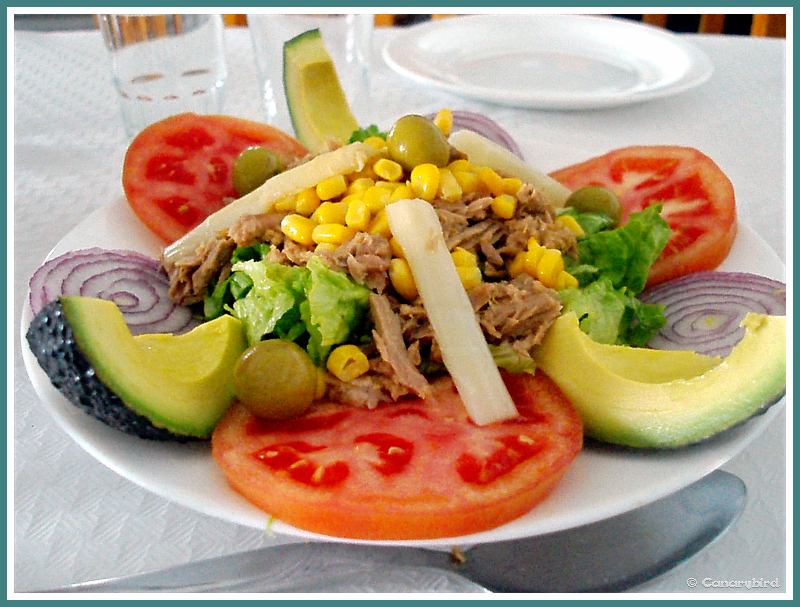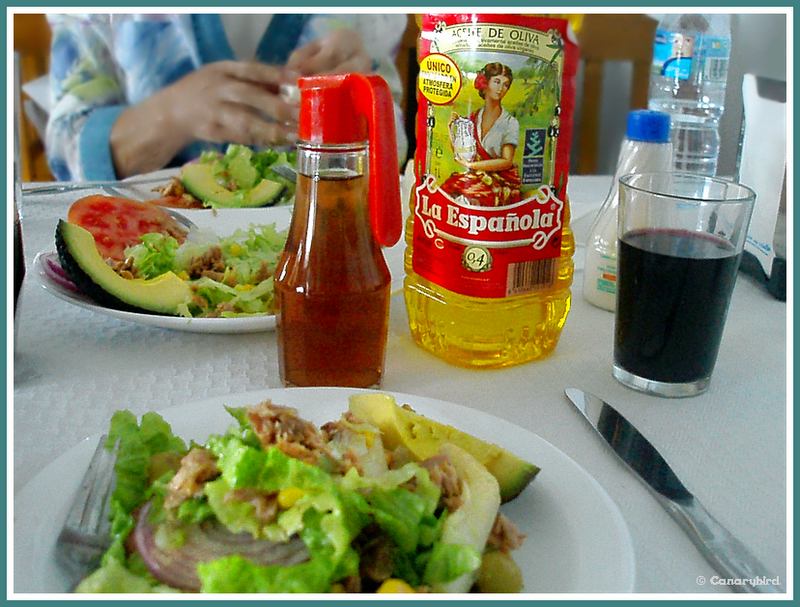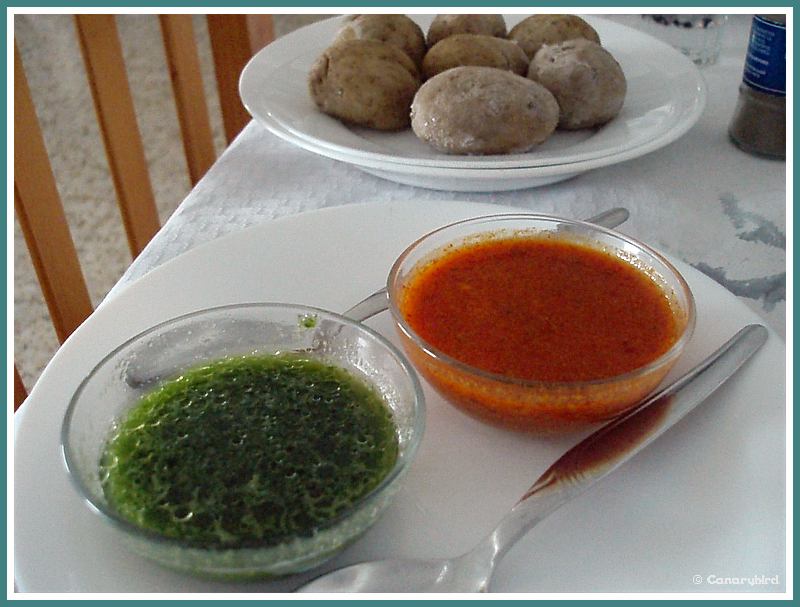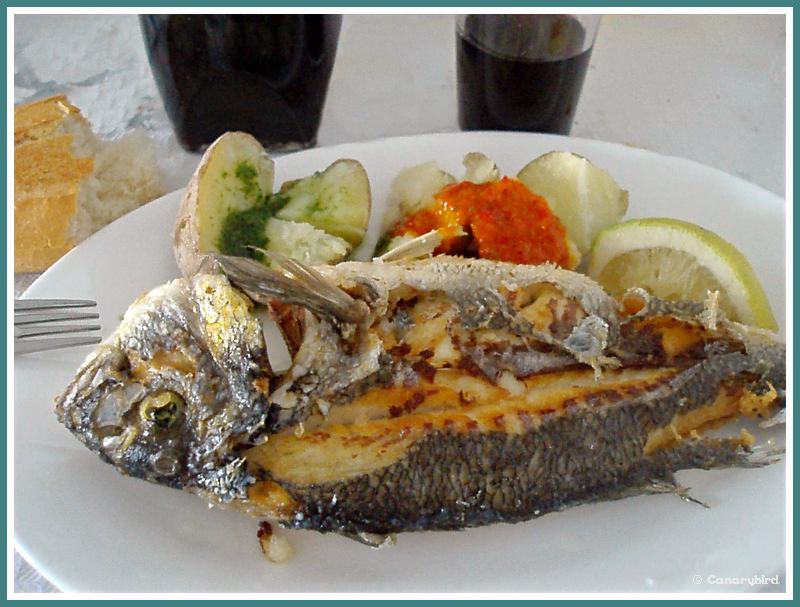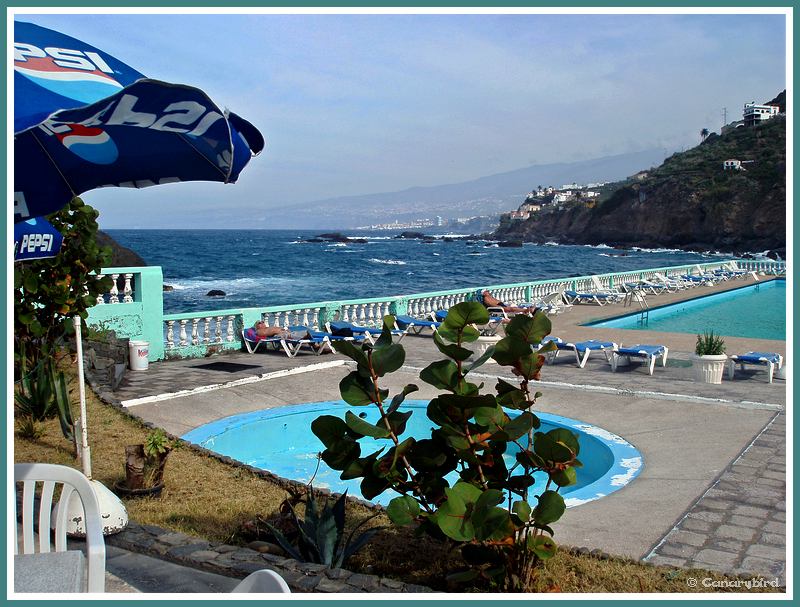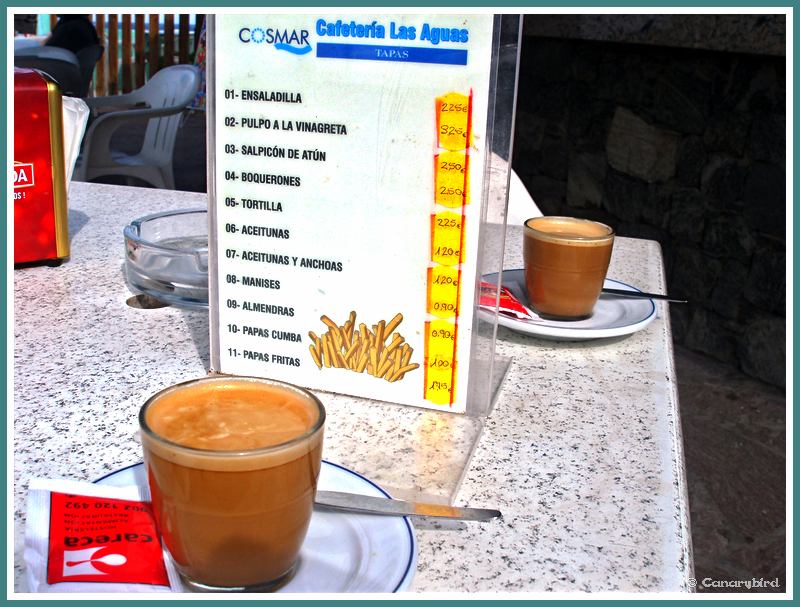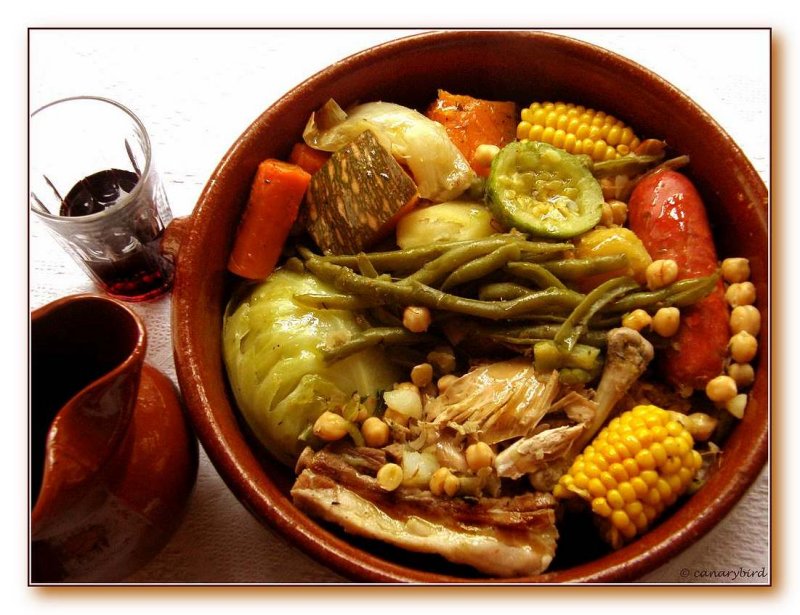 (Click photos to enlarge)
(Click photos to enlarge)PUCHERO CANARIO
Puchero Canario is a very popular meal in Canary Islands. It is a meat and vegetable stew which is simple to make in one pot. As with most such dishes, the ingredients and quantities vary from kitchen to kitchen.
Here's one I made for two people, with leftovers for the next day or for second helpings.
Total cooking time: around 1 hour
Ingredients:
225 grams (1/2 lb) stewing beef
1 chorizo sausage
1 or 2 chicken legs
1 or 2 desalted meaty pork ribs (about 250 grams or 1/2 lb)
1 1/2 cups of dried chickpeas (garbanzos) soaked overnight in water with a bit of bicarbonate of soda
1 small cob corn, cut in half
whole green beans - one handful
2 medium carrots cut in half
1 small onion cut in half
1/2 small cabbage
1 courgette or bubango (pale green courgette)
1 piece orange squash - about 120 grams (1/4 lb) cut in half
1 sweet potato or yam - whole
2 medium potatoes - whole
1 pear - halved
saffron, garlic, parsley, cumin, thyme, (optional Italian parsley)
oil
Preparation:
1. Put a large pot of water on to boil. When boiling, add a few drops of oil, some salt and the meat, ribs, chicken and chorizo. Cook for half an hour.
2. Add the drained and rinsed chickpeas, and the pieces of corn. When they have started to soften, add green beans and carrots and a bit of thyme.
Let these cook together for around 15 - 20 minutes.
3. Then add whole potatoes, sweet potato, cabbage, squash, bubango (or courgette), and pear and cook another 10 - 15 minutes.
4. In mortar mash together a clove or two of garlic, around 1 teaspoon cumin and a bit of saffron...OR alternately as some people do, mash together garlic, cumin and Italian parsley.
5. When the last vegetables have softened, add this above mash to the boiling pot and stir.
6. Remove meat and vegetables with slotted spoon and serve in a casserole dish at the table.
One of the earthenware cazuelas are ideal for serving as they can be purchased here for a very low price.
7. Liquid and remainder of vegetables in the boiling pot can be served next day as 'tumbo de puchero', a delicious soup.
 Puchero Main Ingredients....missing the pear and herbs
Puchero Main Ingredients....missing the pear and herbsBubango - the local name for a pale green rounded courgette or type of zucchini, seen in the ingredient photo above, in the bottom left corner of the tray.
 The separate meat items for making puchero can also be purchased here grouped together in one package at the supermarkets, which is useful. The same applies to the vegetables, which are sold as 'puchero canario', missing only the pear.
The separate meat items for making puchero can also be purchased here grouped together in one package at the supermarkets, which is useful. The same applies to the vegetables, which are sold as 'puchero canario', missing only the pear.


